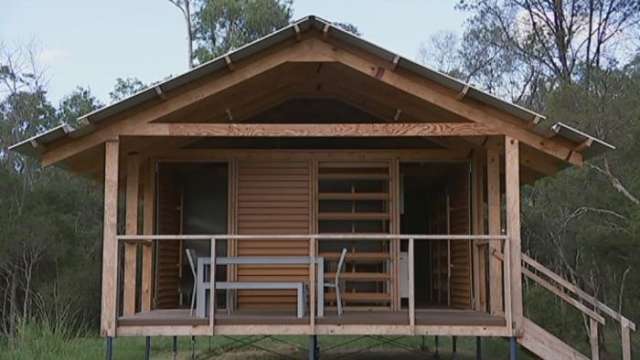For decades, Australian surfboard shaper Nev Hyman shaped boards for world champions, but now he is shaping something quite different: affordable, cyclone-proof housing.
After launching three surfboard brands — the first in 1973 — Mr Hyman initially invested in plastics recycling.
“Being in Bali in the late 70s and early 80s and seeing how fantastic [Bali] was, and then going back there and seeing more and more rubbish in the oceans … I ended up thinking I might as well invest in a plastics recycling company,” he said.
Then, four years ago, Mr Hyman teamed up with leading Sydney architect Ken McBryde to experiment using recycled plastic waste and wood-plastic composite to make cheap homes for Pacific nations that could be quickly set up by non-expert local labour.
The pair initially aimed their project, called The Nev House, at Papua New Guinea.
But following Cyclone Pam in March 2015, they redesigned the house to withstand 300 kilometre an hour winds and shifted their attention to Vanuatu.
“The biggest mistake people actually do make when they’re trying to do good, is they don’t listen to the people,” Mr Hyman said.
“And our aim was to go and meet with the people, understand what they want, design a house that they’ll want to live in.”
Mr McBryde, an expert in indigenous architecture, has designed the house to be culturally appropriate as well as strong and affordable.
“I compare what I’ve learned in Indigenous Australia with the people I’m talking to in Vanuatu, and I’ve learned that the mother-in-law issue also exists in Vanuatu,” Mr McBryde said.
“In indigenous cultures, or in Indigenous Australia, you absolutely avoid looking your mother-in-law in the eye.
“You can prepare to open the door and you can drop your eyes depending on who it is.”
He explained that low-level louvres helped control airflow and climate and meant there was no glass in the building, but also allowed people lying down to see who was coming.
The house impressed the Vanuatu Government and The Nev House received preferred provider status from the administration.
It now wants to source tens of thousands of Nev Houses in flat-pack form for both immediate use and for future natural disaster recovery efforts.
In recent weeks, Mr Hyman’s company has begun supplying about 100 buildings to Vanuatu for use as classrooms and community centres, paid for by a private charitable foundation.
“Up to 100 people can fit in one of those buildings during the cyclone and be safe,” Mr Hyman said.
He said he was hoping the Australian Government would sanction the release of tens of millions of dollars of disaster recovery aid to pay for further Nev Houses, following a tender process and evaluation against conventional housing alternatives.
Many of the deaths during Cyclone Pam occurred on the remote island of Tanna.
“Most of the people that died on Tanna died from semi-permanent houses,” said Paul Nalau, an adviser to the Vanuatu Government and a native of Tanna.
“[Residents] thought they were safe and … bricks fell on them or they were running from one house to another and the corrugated iron sheet … tore through them.
“When I heard about Nev House from my contact in Australia, it just made sense in that we’re going to solve the issue of rubbish plus also provide housing.”
Mr Hyman said he had long-term plans to set up a plastics recycling plant in Vanuatu to process local waste and create building products.




